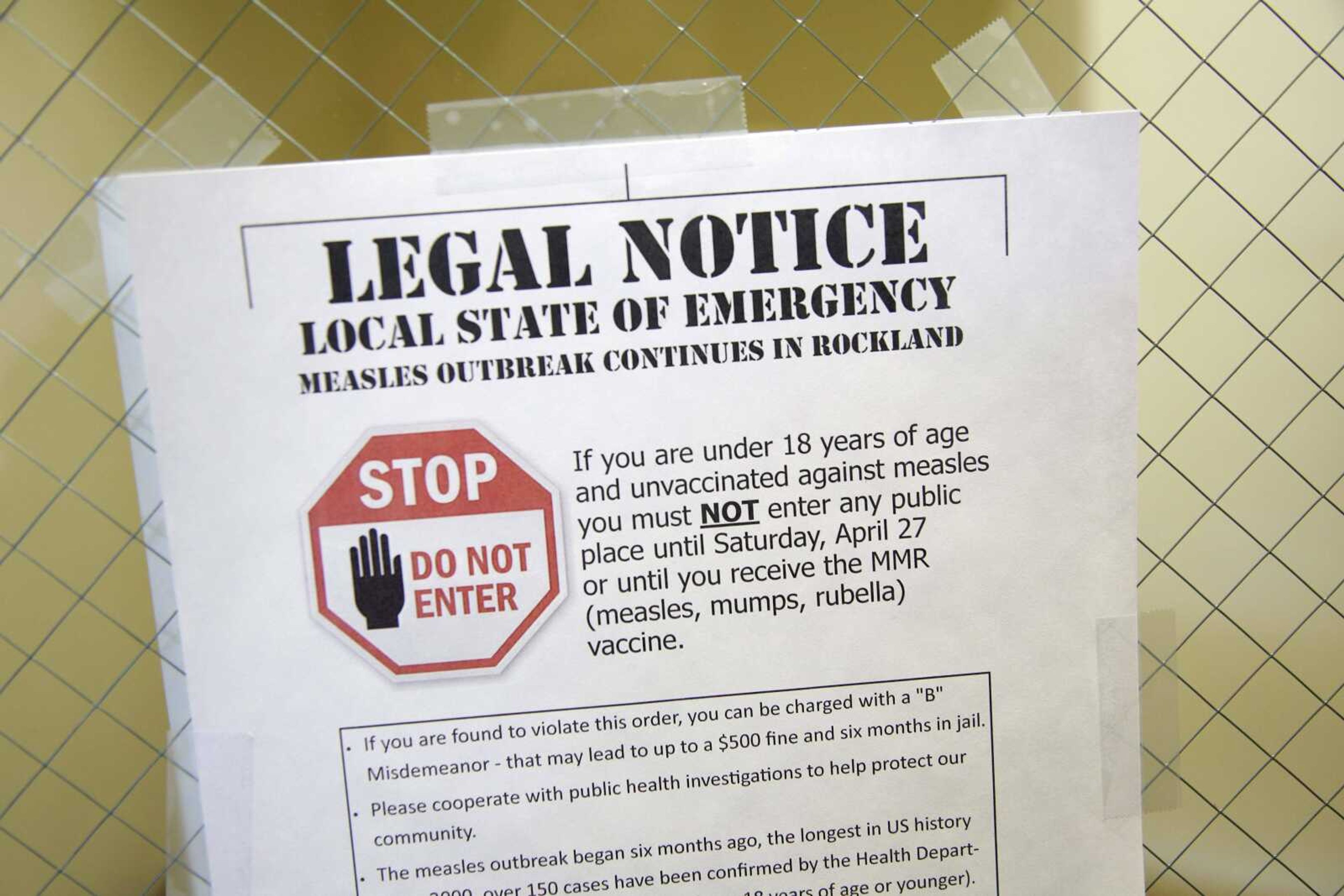Measles cases most in last 25 years
NEW YORK -- Measles cases in the U.S. this year have climbed past 680 to their highest level in 25 years, a resurgence largely attributed to misinformation turning parents against vaccines. Health officials in hard-hit New York City on Wednesday reported 61 new cases since late last week, in what would make this the nation's worst year for measles since 1994, with eight months still to go. Other states are reporting more cases, too...
NEW YORK -- Measles cases in the U.S. this year have climbed past 680 to their highest level in 25 years, a resurgence largely attributed to misinformation turning parents against vaccines.
Health officials in hard-hit New York City on Wednesday reported 61 new cases since late last week, in what would make this the nation's worst year for measles since 1994, with eight months still to go. Other states are reporting more cases, too.
The official nationwide count will not be released by the Centers for Disease Control and Prevention until Monday. CDC officials said they are reviewing the latest reports.
Roughly three-quarters of this year's illnesses in the U.S. have been in New York state, mainly in two ultra-Orthodox Jewish communities in Brooklyn and suburban Rockland County. Most of those cases have been in unvaccinated people.
The number of cases is likely to go even higher. Measles is highly contagious and can spread through the air when someone coughs or sneezes. And in recent days, Jewish families have been gathering for Passover meals. It can take 10 to 12 days for symptoms to develop.
The CDC recommends the vaccine for everyone over a year old.
The vaccine, which became available in the 1960s, is considered safe and highly effective, and because of it, measles was declared all but eliminated in the U.S. in 2000. But it has made comebacks since then, including 667 cases in 2014.
Public health experts say some U.S. communities have low vaccination rates because of the spread of bad information -- especially the now-debunked notion the measles-mumps-rubella vaccine is linked to autism -- through social media, pamphlets, hotlines and other means.
"Many parents are afraid. And if you want to believe your kid doesn't need that many shots, there's plenty of places to find people who agree with you," said Dr. Jonathan Fielding, former head of the Los Angeles County Department of Public Health. "It's not so easy to discern what is real and what is not."
For most people, measles is not life-threatening. The most common symptoms include fever, runny nose, cough and a rash all over the body. However, a very small fraction of people can suffer complications such as pneumonia and a dangerous swelling of the brain.
According to the CDC, for every 1,000 children who get measles, one or two will die from it. No deaths have been recorded this year.
On Monday, the CDC put the nationwide count of measles cases at 626. The latest New York City illnesses would push the national tally past 680 and closing in on 700, according to an Associated Press review of state and national figures.
In 1994 there were 963 cases.
Up to now, the biggest single U.S. measles outbreak in recent years was in 2014, when 383 cases were reported in the Amish community in nine Ohio counties. But on Wednesday, New York City officials said the outbreak centered in some of Brooklyn's Jewish neighborhoods has accounted for 390 cases since October.
"These cases are stark reminders of why New Yorkers must get vaccinated against the measles as soon as possible," New York City Health Commissioner Dr. Oxiris Barbot said.
Ultra-Orthodox rabbis generally have no religious objections to vaccines and have urged their followers to get inoculated. But the "anti-vaxxer" movement has made inroads among the ultra-Orthodox, even though they have little exposure to the internet.
Earlier this month, city officials ordered mandatory vaccinations in four ZIP codes in the Williamsburg section of Brooklyn and threatened fines of up to $1,000 for noncompliance. City officials said 12 people have been issued summonses.
There have been three measles-related deaths reported in the U.S. since 2000, the last one in 2015. The worst year for measles in modern U.S. history was 1958, with more than 763,000 reported cases and 552 deaths.
Connect with the Southeast Missourian Newsroom:
For corrections to this story or other insights for the editor, click here. To submit a letter to the editor, click here. To learn about the Southeast Missourian’s AI Policy, click here.









